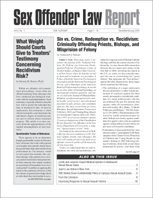Synopsis of “Digital Evidence in the Courtroom: A Guide for Law Enforcement and Prosecutors”
Author: Roslyn Myers, Esq..; Irene Lee.
Source: Volume 08, Number 04, June/July 2007 , pp.52-54(3)

< previous article |next article > |return to table of contents
Abstract:
These days everyone communicates via text, cell phone, and instant messaging, in addition to what is now the “old fashioned” landline telephone. We send our most urgent and intimate messages using these modern means of communication, and we take comfort in the privacy they provide. After all, no one can eavesdrop on a conversation that is typed on a keypad, not spoken. But messages typed in text form, including text messages through the cell phone or email, are in no way secure. To access them, it takes more than simply standing in the next room with a glass to the wall, but they can be “overheard.” Most people, by now, are aware that electronic messages never disappear. They are recorded on servers and networks indefinitely.Keywords:
Affiliations:
1: Fordham Law School; 2: Fordham University School of Law.